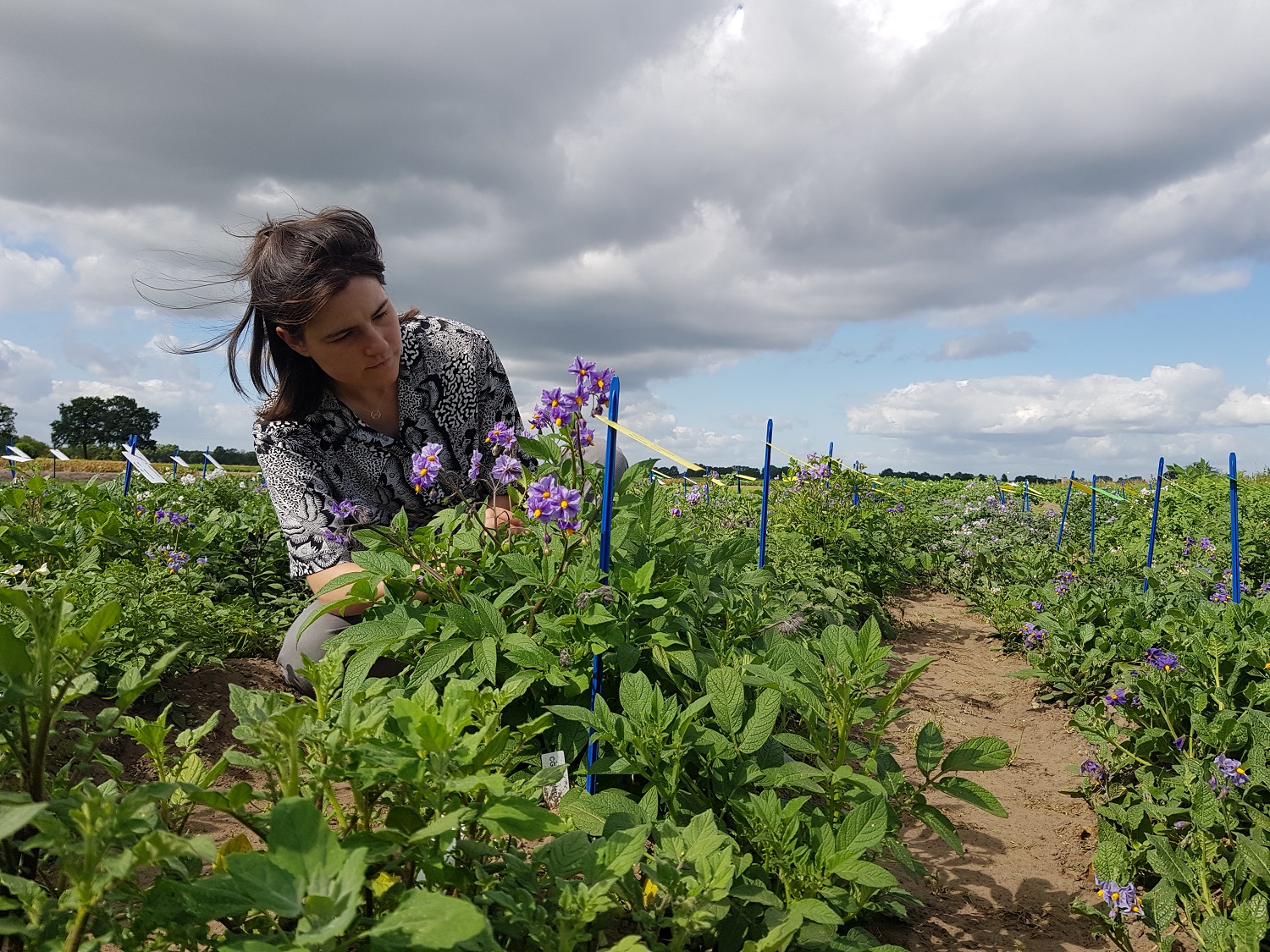With a new institute on the campus and a load of money, scientists are going in search of the Holy Grail: improving photosynthesis.
Photosynthesis is the engine of life on earth. This process in plants converts water and CO2 into oxygen and carbohydrates, with the sun as its driving force. Could it be made more sustainable? Possibly, given that plants use only one per cent of the sunlight reaching them for their photosynthesis. If this could be done more efficiently, would trees grow sky-high? Louise Fresco thinks they would. She called improving photosynthesis the Holy Grail of agriculture back in 2015, during her first Dies Natalis as WUR president.
The reasoning is simple: with improved photosynthesis, plants would grow faster. Since the world’s population is still growing, that sounds like music to our ears. But faster growth does not necessarily mean a bigger yield. ‘The question is what the plant does with extra nutrients,’ says René Klein Lankhorst, programme developer at the Plant Sciences Group (PSG) and leader of large projects on photosynthesis. ‘Potato plants that are five metres tall but have small potatoes are of no use to you. So, in addition to photosynthesis, you need to influence a lot more processes that ensure that the extra energy produces more, larger or faster-growing tubers. Or, in the case of grain, more, larger or faster-growing grains. You have to fine-tune that for each plant.’
Not Arabidopsis
‘This is the old Wageningen mantra, really: more production per square metre with less input,’ says Ernst van den Ende. As the former director of PSG, he was closely involved in the creation of the new institute. ‘The dot on the horizon is that in 10 years’ time, the concept of better photosynthesis will have produced a food crop with a bigger yield per square metre. It also means that we will not spend 10 years working with the model plant Arabidopsis. We are starting a fundamental science programme knowing that the concepts being developed will translate into potatoes, tomatoes, grains, rice, cassava, and so on.’
Which plant is at the top of the wish list is not yet clear. ‘We are thinking of the potato plant. You can get off to a flying start with the potato, because we already know a lot about it. The private financiers focus strongly on Africa. The potato is an increasingly common food crop there. I think eventually we’ll do both: we’ll work on the potato, but in parallel programmes we’ll show how the concept can be applied to certain tropical crops such as cassava.
If we really want to make great strides, we must form a large consortium
We’ve got our ideas about research lines on paper. There has already been a lot of discussion, both within Wageningen and in the large European consortium, Photosynthesis 2.0. The ideas need to really crystallize in the coming months. The new scientific director will play an important role in this.’
Big money
The mention of Photosynthesis 2.0 brings us to another big dream. It is under this banner that an international consortium operates, made up of more than 50 universities and institutes from 17 European countries.
You can get off to a flying start with the potato
The collaboration was forged on the advice of senior EU officials. ‘When Louise (Fresco, ed.) talked about the Holy Grail of photosynthesis back then, we lost no time in going to talk to her,’ Klein Lankhorst says. ‘We said, if we really want to make great strides in photosynthesis, we must form a large consortium. Louise was on board straightaway and approached a senior EU official. He said: ‘Form a consortium of that kind and draft an initial research plan’.
The aim was to participate in the EU’s FET Flagships programme. A flagship of European science is eligible for one billion euros in funding. The consortium was formed, but the big money has yet to arrive, says Klein Lankhorst. Funding was allocated, however, for photosynthesis research on a smaller scale in the Capitalize project, which seeks to improve photosynthesis through breeding. ‘And we received money for CropBooster-P, an international project to develop a roadmap for making crops future-proof. It is an advisory report to the European Commission and I am the coordinator. The aim is to increase crop yields in a sustainable way. Our final report will be ready by the summer.’
Social sciences
More efficient photosynthesis could be the kind of sustainable improvement that is needed. That it can be done more efficiently is demonstrated by plants like Mediterranean mustard. This plant converts five per cent of the sunlight that falls on it into nutrients. Scientists from Wageningen are busy figuring out how the plant does this. In fact, it was this research, already sponsored by the financiers of the new institute, that persuaded them to do more work on photosynthesis.
‘Once you know how a plant like this one achieves that level of efficiency, you have the key to the future,’ says Van den Ende. ‘Such lines of research will be pursued at the institute too.’ But he definitely does not rule out genetic modification (GM). ‘That’s a sensitive topic in Europe. My personal opinion is that the GM debate has been overtaken by scientific developments such as CRISPR-Cas. On the other hand, there is of course no point in working on innovations that society does not accept. For that reason, we shall involve the social sciences in the institute as well. Although our plans are by no means set in stone.’

 Foto: Shutterstock
Foto: Shutterstock 